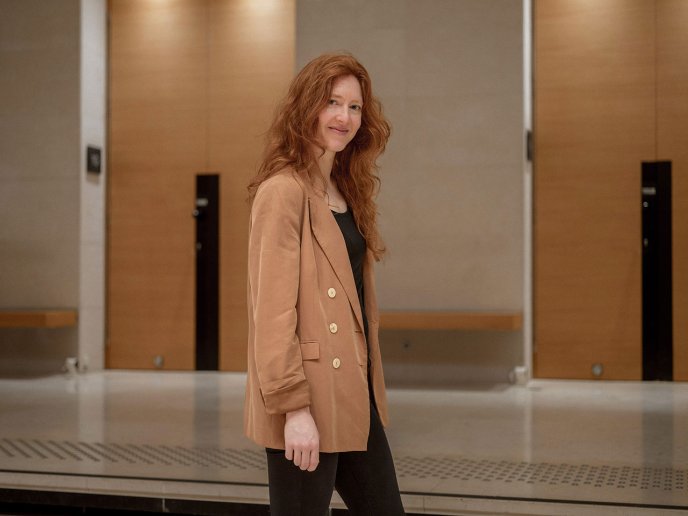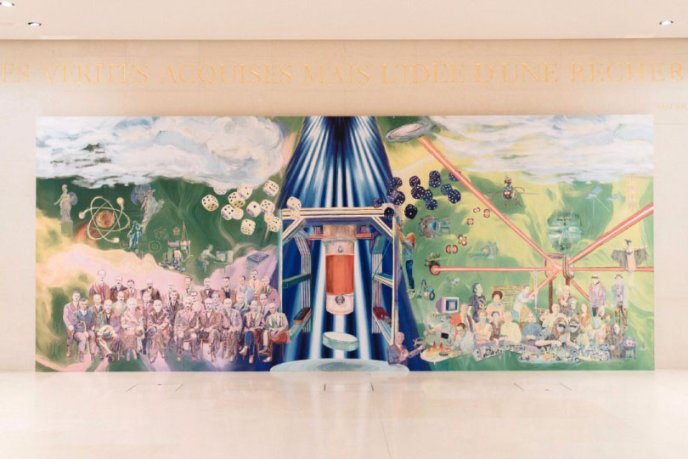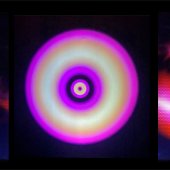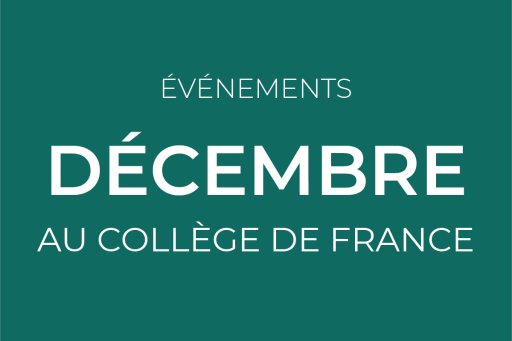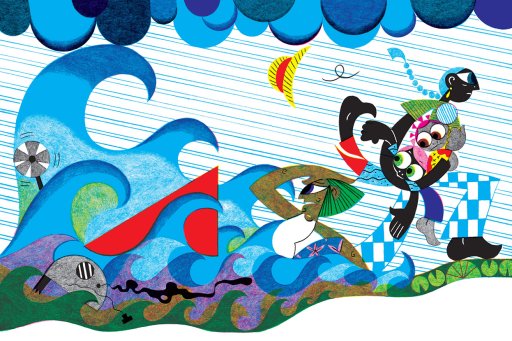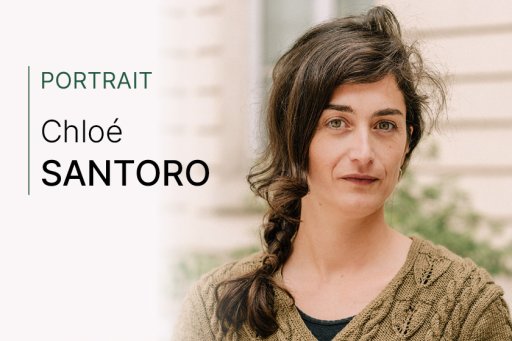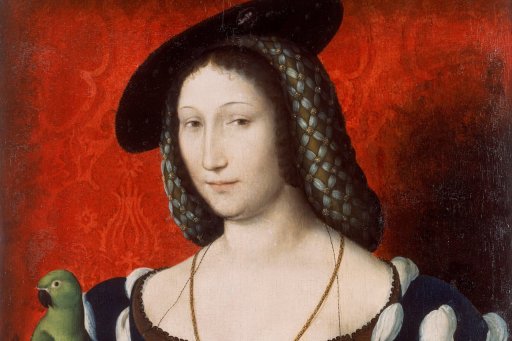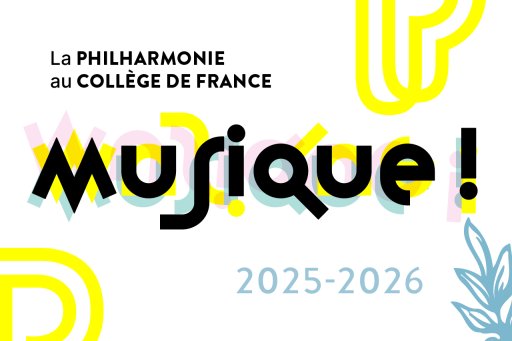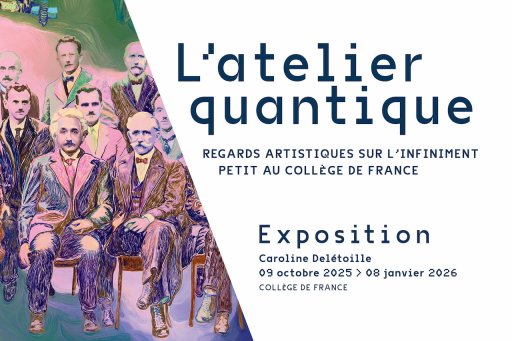Quantum physics is overturning our classical conceptions of reality. To enable as many people as possible to grasp this scientific revolution, the exhibition L'Atelier quantique engages in an unprecedented dialogue between science, art and philosophy. This interdisciplinary approach poses a fundamental question : can we represent the invisible world described by quantum physics without betraying its nature ?
Interview with Aurore Young*, physicist at the Collège de France and scientific curator of the exhibition.
Highly mathematical, quantum physics is a science that describes microscopic particles whose actual behavior remains inaccessible to our senses. While mathematical language is essential for researchers, it also makes it difficult for the general public to understand the discipline and grasp the issues involved. Against this backdrop, a number of initiatives aim to reactivate the links between knowledge and sensibility. This is the ambition of L'Atelier quantique, an exhibition at the Collège de France designed to enable as many people as possible to grasp some of the concepts of quantum physics, a discipline often perceived as both fascinating and inaccessible, combining mathematical abstraction, conceptual strangeness and remoteness from the senses.
The project was born of a friendship. A friend from preparatory school, Caroline Delétoille, was becoming a painter at the same time as I was going back to school," says physicist Aurore Young. Then, when we met Céline Boisserie-Lacroix, a philosopher specializing in exchanges between science and the visual arts, we decided that art would be an interesting gateway to quantum physics ". From this meeting was born the idea of a joint exhibition, presented in spring 2025 under the name Sensation quantique at the Institut Henri-Poincaré. This autumn, the exhibition comes to life in a revisited version at the Collège de France, L'Atelier quantique, and at Centquatre-Paris, each of the two venues highlighting a complementary facet of the initial project.
This ambitious idea is based on the need to " find a common language between philosophy, art and science ", a task that all three recognize as one of the project's major challenges. Far from being a simple exercise in popularization, L'Atelier quantique explores the conditions for translating a mathematical world into a sensitive one, without betraying scientific rigor. The aim is " to use emotion to arouse the visitor's curiosity, and then encourage him or her to read the mediation panels", says Aurore Young.
A doctoral student at the Laboratoire Kastler-Brossel, Aurore Young works at the frontier between theory and experimentation. Every day, she interacts with extremely precise optical devices designed to trap atoms using lasers and place them in particular quantum states. " We put the atoms close together, then send them into a so-called Rydberg state to see how they interact ", she explains. The aim is to create a form of " synthetic matter ", enabling us to simulate the behaviour of real materials, and to better understand phenomena that are still poorly understood, such as superconductivity, defined by the absence of electrical resistance in certain materials. But while experimental rigor is at the heart of this research, the very nature of quantum objects prevents any direct apprehension. The physicist points out that " to say that an object is in a superposition of states is a mathematical way of describing it, but we can never observe it as it is. With each measurement, we disturb the system ". This constitutive invisibility is the tipping point through which art can interrogate science by exploring forms of metaphorical representation of the concepts of quantum physics.
Science as a sensitive experience
The heart of the exhibition project lies in a bold analogy : comparing quantum superposition to the plurality of memories. " A quantum object can exist, before any measurement, in several states at once. But as soon as we measure it, it will freeze in one state. Similarly, a memory is never unambiguous: each time it is recalled, the memory reassembles and reconstructs it ", describes Aurore Young. A memory can take many forms, depending on the point of view adopted. The main installation in the exhibition, for example, features a family dinner, reconstructed from old photographs. Caroline Delétoille has produced several paintings depicting the same scene from different angles, inspired by photographic archives from the Musée Nicéphore-Niépce in Chalon-sur-Saône. Visitors are invited to mentally reconstitute the totality of the memory, " as one reconstructs a quantum state by tomography ", i.e. by aggregating multiple partial measurements. This precise, limited gesture of analogy makes the probabilistic essence of quantum mechanics tangible, without reducing it to a simplistic image.
Aware of the potential for misinterpretation, the team was keen to establish a number of safeguards. " We didn't want visitors to think that memory really works in a quantum way ", insists Aurore Young. Quantum physics is an extremely rigorous field, and its concepts, though sometimes poetic, obey precise mathematical laws. Any attempt at analogy must assume its limits. Our ambition is not to reduce one to the other, but to make a mathematical intuition tangible through a familiar image. This project is also an opportunity for art to enter the laboratory. Caroline Delétoille has carried out several residencies, notably at the Collège de France and in a Vancouver laboratory, to " paint science " in the making. This is a rare gesture, for, as Aurore Young recalls , " few artists have depicted quantum physics laboratories. Yet there is a real beauty in research ". What's at stake here is not so much the faithful reproduction of a technical universe as the aesthetic intuition of emerging forms : electronic clouds, superpositions of states, networks of atoms trapped by light. In this way, survival blankets - used in his laboratory to stabilize laser temperatures by blocking out windows - become pictorial matter. The laboratory is no longer simply a place where knowledge is produced, but a symbolic space permeated by aesthetic and existential questions.

